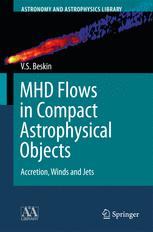

Most ebook files are in PDF format, so you can easily read them using various software such as Foxit Reader or directly on the Google Chrome browser.
Some ebook files are released by publishers in other formats such as .awz, .mobi, .epub, .fb2, etc. You may need to install specific software to read these formats on mobile/PC, such as Calibre.
Please read the tutorial at this link: https://ebookbell.com/faq
We offer FREE conversion to the popular formats you request; however, this may take some time. Therefore, right after payment, please email us, and we will try to provide the service as quickly as possible.
For some exceptional file formats or broken links (if any), please refrain from opening any disputes. Instead, email us first, and we will try to assist within a maximum of 6 hours.
EbookBell Team

0.0
0 reviewsAccretion flows, winds and jets of compact astrophysical objects and stars are generally described within the framework of hydrodynamical and magnetohydrodynamical (MHD) flows. Analytical analysis of the problem provides profound physical insights, which are essential for interpreting and understanding the results of numerical simulations. Providing such a physical understanding of MHD Flows in Compact Astrophysical Objects is the main goal of this book, which is an updated translation of a successful Russian graduate textbook. The book provides the first detailed introduction into the method of the Grad-Shafranov equation, describing analytically the very broad class of hydrodynamical and MHD flows. It starts with the classical examples of hydrodynamical accretion onto relativistic and nonrelativistic objects. The force-free limit of the Grad-Shafranov equation allows us to analyze in detail the physics of the magnetospheres of radio pulsars and black holes, including the Blandford-Znajek process of energy extraction from a rotating black hole immersed in an external magnetic field. Finally, on the basis of the full MHD version of the Grad-Shafranov equation the author discusses the problems of jet collimation and particle acceleration in Active Galactic Nuclei, radio pulsars, and Young Stellar Objects. The comparison of the analytical results with numerical simulations demonstrates their good agreement. Assuming that the reader is familiar with the basic physical and mathematical concepts of General Relativity, the author uses the 3+1 split approach which allows the formulation of all results in terms of physically clear language of three dimensional vectors. The book contains detailed derivations of equations, numerous exercises, and an extensive bibliography. It therefore serves as both an introductory text for graduate students and a valuable reference work for researchers in the field.